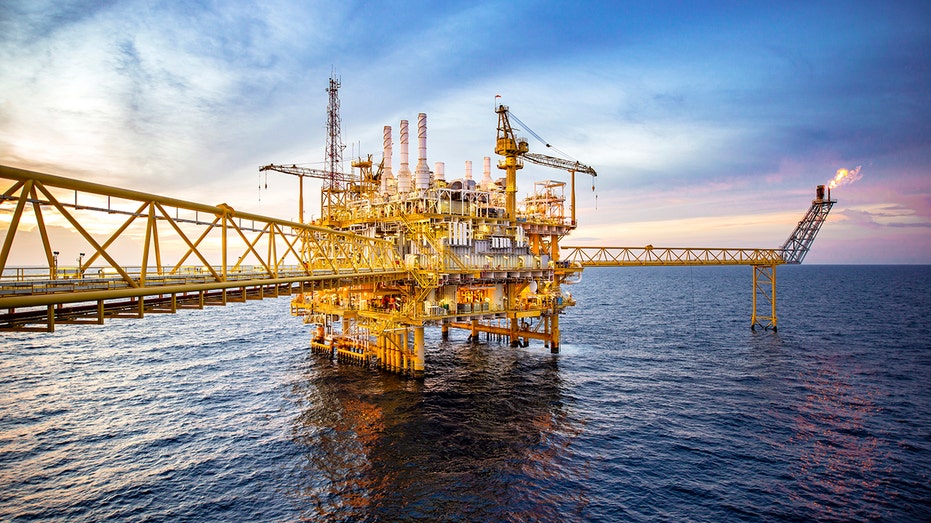Natural gas prices, supply signal expensive winter heating bills
Biden ‘took an axe to American energy’: Sen. John Barrasso
Sen. John Barrasso argued President Biden’s approach to U.S. energy is ‘astonishing.’
With tropical storm Nicholas on the horizon and the aftermath of Hurricane Ida still impacting gasoline prices, natural gas futures are hovering near a seven-year high and supplies are dwindling.
That means the U.S. could see the highest heating bills they've seen in years this fall and winter. A slow rebound in production from the hurricane, globally tight supplies, and bad energy policy could equal a natural gas nightmare before Christmas.
WHITE HOUSE SCRAMBLES TO COMBAT RISING PRICES
| Ticker | Security | Last | Change | Change % |
|---|---|---|---|---|
| USO | UNITED STATES OIL FUND L.P. | 48.80 | +1.05 | +2.20% |
Natural gas is one of the preferred sources of energy in this country not only for electricity and factories but mainly as a heating source for people’s homes. Over 50% of U.S. homes are heated by natural gas and even those that use electric heat pay for natural gas price increases through the backdoor as 38% of total U.S. natural gas consumption goes into providing electricity.
FEMA HEAD BUYS CROWDSTRIKE SHARES AS DHS EMPLOYS COMPANY
Hurricane Ida not only hit 90% of natural gas output but also did major damage to key onshore staging areas and because of that, it is taking much longer to restore natural gas production than ever. Over 78% of the Gulf of Mexico's Natural gas production remains offline and there is no clear timeline as to when they can get things back to normal. The pace of recovery, in just the natural gas side of the equation, is one of the slowest recoveries in history, worse than Hurricane Katrina back in 2005.
| Ticker | Security | Last | Change | Change % |
|---|---|---|---|---|
| UNG | UNITED STATES NATURAL GAS FUND LP UNIT (POST REV SPLIT) | 17.35 | -0.14 | -0.80% |
Large offshore drilling oil rig plant in the gulf That is bad news and timing because this is the time of year the U.S. has to build inventories so that we can have enough supply to get through winter. The way the natural gas market works is kind of like the way squirrels work. At this time of year, they collect their acorns so they can get through winter, That is exactly what the US energy industry has to do with natural gas, so they have to have extra supply and storage so that during cold winters they have enough to meet increased demand. TROPICAL STORM NICHOLAS: THE LATEST Currently, natural gas supplies in storage are 16.8% below year-ago levels and 7.2% below the five-year average. If we don’t see Gulf production bounce back those supply deficits will grow to cause a situation that could leave us vulnerable to price spikes if not shortages. HP USE ONLY (GETTY) The U.S. in recent years has been less reliant on Gulf of Mexico gas production because of fracking and the shale gas revolution. Shale production of natural gas was a historic game-changer as we went from a country that couldn't produce enough to meet our own needs to become the biggest producer in the world. Our increased production of natural gas also dramatically lowered our greenhouse gas emissions as the US was able to replace dirty coal plants with much cleaner-burning natural gas. Under President Trump U.S. natural gas production grew by 10.0 billion cubic feet per day (Bcf/d) in 2018, an 11% increase from 2017. The growth was the largest annual increase in production on record, reaching a record high for the second consecutive year. Yet but the anti-drilling campaign by the Biden administration and the desire to push more natural gas production offshore created a situation where U.S. production is stagnant as opposed to growing. Natural gas production fell to 91.7 billion cubic feet in the first half of this year. As a result, natural gas future prices have risen 94% since President Biden was inaugurated. That is the biggest surge in natural gas prices going back to the year 2000. That pullback in US natural gas output has exasperated a global shortfall of natural gas that is driving prices to record highs in Europe and Asia. Wind Power generation has also underperformed and that is forcing those countries to switch fuel use to much dirtier coal. We are now increasing our dependence on natural gas production in the Gulf of Mexico and that leaves us more economically vulnerable and at the mercy of mother nature and hurricanes. With fracking on land, production was less impacted by the weather especially hurricanes, and remember that hurricane season is far from over. The slow rebound in production from Hurricane Ida may only be part of the story because there is already more tropical activity in the Gulf of Mexico. That could once again leave natural gas production and platforms at risk. With the global shortage of natural gas, it's not like we can look to our neighbors to the north in Canada to provide us with enough natural gas to get us through winter. Let's hope and pray that the U.S. natural gas producers get production back online because even if it gets online because of the risk of record-high prices and shortages is already real. That is especially true if Mother Nature serves us up a colder than average winter. READ MORE ON FOX BUSINESS BY CLICKING HERE Phil Flynn is senior energy analyst at The PRICE Futures Group and a Fox Business Network contributor. He is one of the world's leading market analysts, providing individual investors, professional traders, and institutions with up-to-the-minute investment and risk management insight into global petroleum, gasoline, and energy markets. His precise and timely forecasts have come to be in great demand by industry and media worldwide and his impressive career goes back almost three decades, gaining attention with his market calls and energetic personality as writer of The Energy Report. You can contact Phil by phone at (888) 264-5665 or by email at [email protected]. Source: Read Full Article



